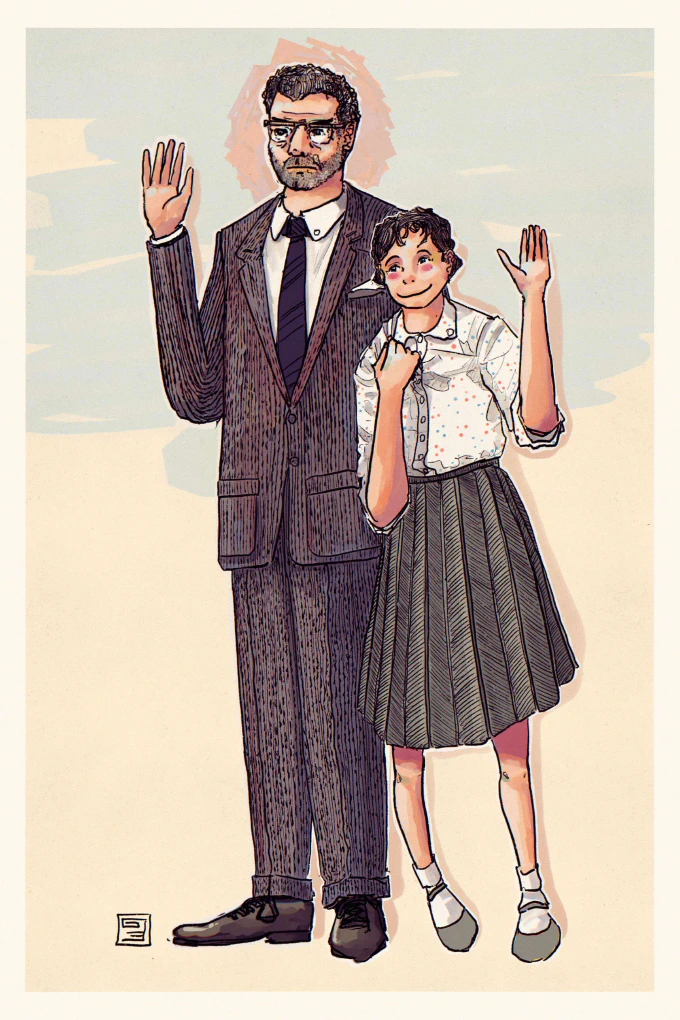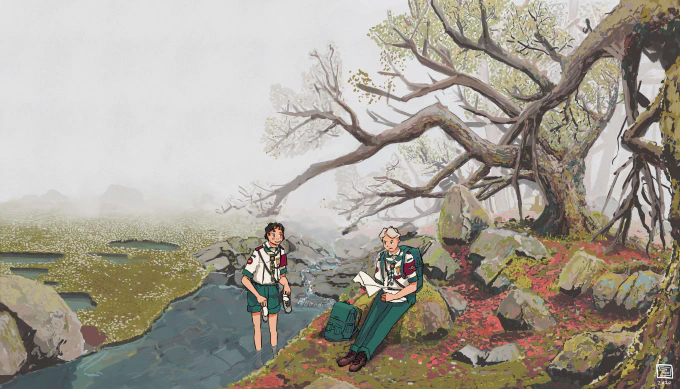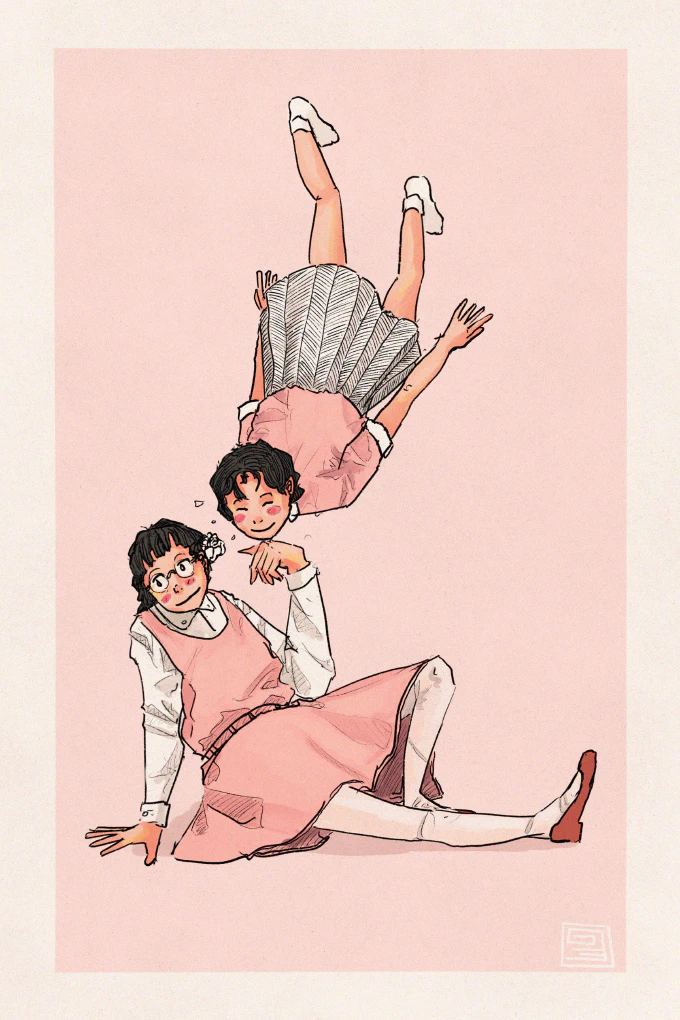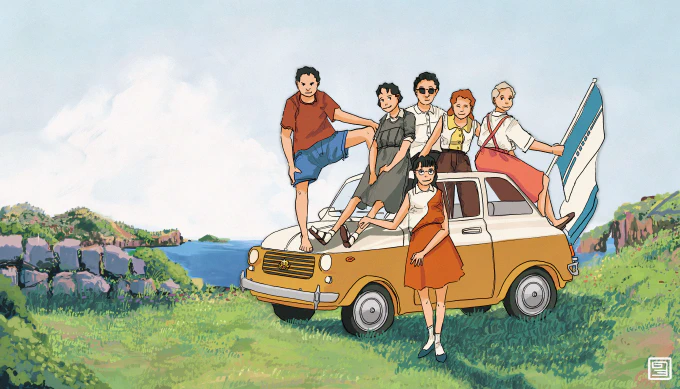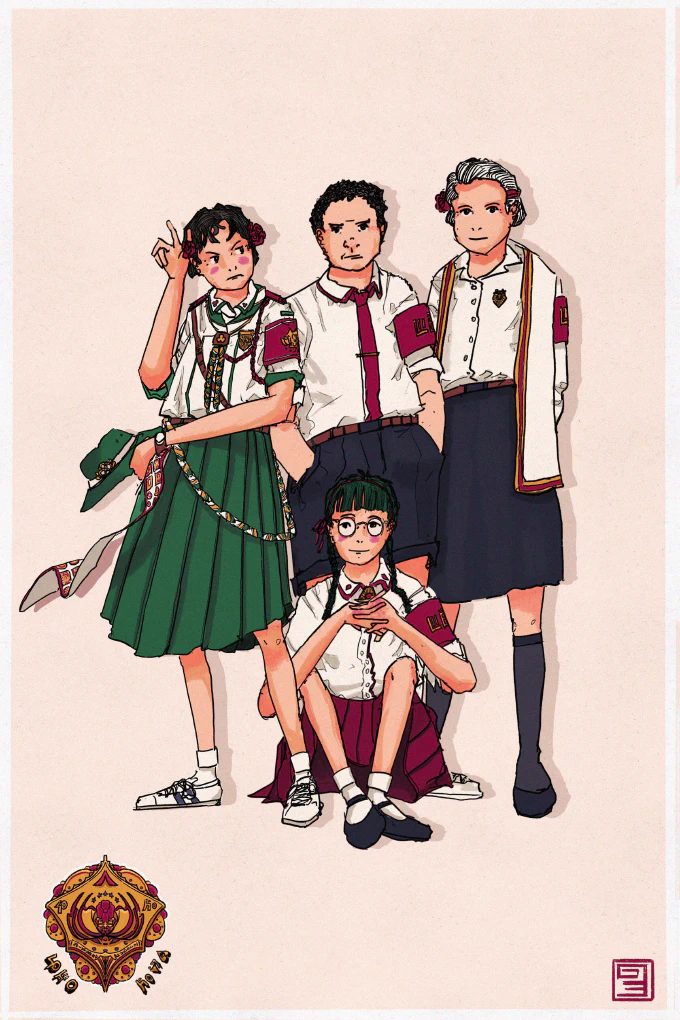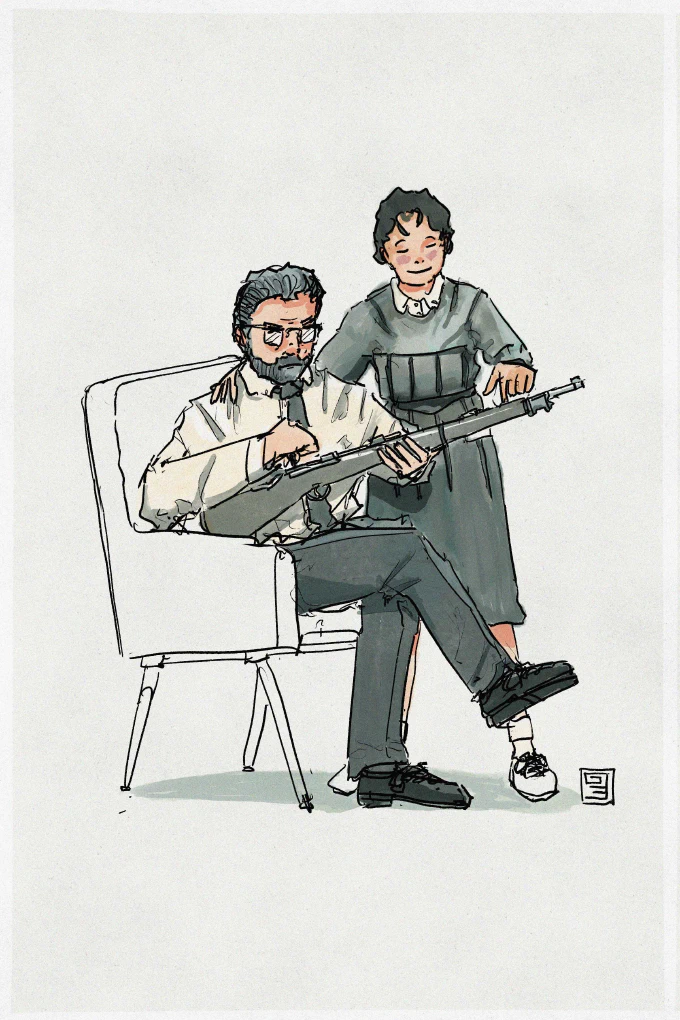NEW Story: Sunday Morning
The Atlantic Bulletin
From the Editor #
Welcome to the fifth issue of The Atlantic. I hope you like stories — because this month was all about little snippets of life in Vekllei.
There is a correlation between how nice a picture looks and how short the accompanying story is. Recently, as I’ve finished paintings later and later into the early morning, the posts that follow show signs of my fatigue. It’s to my detriment — and with a bit of planning, easily avoided. In October I’ll be looking at making some long-form posts in a painterly style to experiment with the format.
Appropriate for such a quiet month, no one got their contributions in on time! This makes a nice short bulletin. As a reminder, if you would like to contribute to The Atlantic with writing, art or reviews relevant to the spirit of petticoat ideology, please contact Hobart at [email protected] before the 31st of October.
Thank you for supporting Vekllei, and best wishes.
Hobart Phillips Enjoy — 楽しんで
I. News & Announcements #
- Huge advancements on the website, which will likely launch sometime this month. Watch this space! If you’ve missed previous bulletins, they’ll be available in full on the site along with a comprehensive wiki and post archive.
- The wiki supports live switching between multiple languages — if you’re bilingual (or for that matter, trilingual!) and have some interest in translating a few pages, let me know!
- Quiet month on the subreddit, but managed to work on a little animation that turned out quite nice! See below.
- My thesis is due on the 23rd of October — this means that content will pick up for the remainder of the year. I plan to launch the comic in November.
- That’s all. Quiet month — not a bad thing in the slightest.
II. Tzipora-watch #
In September of 2073, Tzipora began work at the Lola District Library at the age of 26, a move that would develop within her a love of librarianship that would see her enrol in Montre-Lola University to study literature two years later. Her time at Lola was spent managing loans and navigating visitors through the vast archives beneath by way of a light monorail.
III. Vekllei Fact of the Month #
Upen designates a hierarchy in the human body as part of ritualistic processions. The heart, depicted as a crown, is considered the most sacred. The brain and hands are next, and the rest of the body is catalogued and ordered ending with the feet. Feet are considered unclean in Vekllei and is part of the reason why shoes are not worn indoors. This hierarchy, called Lohsmi, is a minor cultural force but is important in the physical formation of runes, or Upotenne (spirit-hand-talk).
IV. WordBook #
Spiousn — difficult to translate, spiousn describes the feeling of regaining energy after a long period of exhaustion. It can be applied to a sick person becoming well, or more contemporaneously to a student after the exam period. This word forms a component of the slang spiousnya, which refers to the break from school at the end of the year. In this sense, its meaning translates to “school break” but carries with it a sentiment of peace and recovery.
V. The Bulletin #
Baron, the Father #
📖 Published 30th September 2020 | Read here.
People are not sure what to make of Baron. They are not sure what to make of his daughter, Tzipora, either. To that end, they are lucky to have found each other.
His obscurity is part of a severe disposition, made obvious by his astonishing disinterest in friends and hobbies. When he finishes work, he listens to the radio, prepares supper, and goes to bed. His unrelenting seriousness is mitigated by his general passivity — Baron is a man totally in control, who keeps to himself and does not take issue with what goes on around him. For his seriousness he is not particularly judgemental or opinionated. To call him boring would be a poor characterisation; he simply feels he has done enough and is not looking to complicate the basic equations of his life.
Tzipora (Zelda to him) complicates this equation. She’s similar to him in many ways, with her conservative personal disposition and humble lifestyle. She does not make a very good teen-ager.
“It’s funny you say that. I was talking to her the other day, and she was talking about how nice it was to have some peace and quiet,” Baron once confided in Ayn. “Of course, she looks very young, so sometimes you have to remind yourself that she’s not a child. She’s not thirteen, she’s nineteen, and very unusual, I think. She’s very smart but she doesn’t let that on much.”
Tzipora did not really have “phases” — Tzipora was Tzipora, eternal. But she was a much more emotionally attuned person, and her highs were higher and her lowers were lower than anything Baron had felt in decades.
He was not always so unfeeling. Baron’s Ashkenazim parents were pulled straight from the bubbling diaspora of Eastern Europe. They met in the labour zionist movement, but fell out of love with professional organising and immigrated to a struggling Vekllei to work in the national hydroelectricity scheme, among thousands of immigrants employed by the Thunderburo.
He was born in 2027 and was not very interested in school as a child. He was rebellious and obstinate, and had only vague ambitions of acquiring a trade certificate in motorcycle repair. His sister, Amelie, died of tuberculosis when he was 11. That was about the end of school ambitions for him.
He started conscription early and spent his high school years in an army college. By the time he was 18, he was transferred to military police. It was 2045. He had started dating a middle school sweetheart, Ayn, two weeks before the war in Taiwan broke out.
Young Baron died in Taiwan, and another figure in his body returned. He was transferred almost immediately to a junior post at the Americas Bureau at National Intelligence (AB/NI), where he would spend the next decade. While he was stationed abroad, his mother died and his father followed. By this time, Baron was a significant asset for Vekllei’s deep autonomous intelligence work — apolitical, unattached, unsentimental and steady on his feet. He was destined to die in Colombia, employed indefinitely and waiting to be used up. In 2063, he met a fellow Spanish-speaking Jew by name of Tzipora.
In many ways, his identity is as fractured as Tzipora’s, whose Jewish European ancestry was a novel curiosity and not much more. She considered herself a Latina-American until she was Vekllei, and since then she has not been anything more. That was how it went in Vekllei’s grand secular melting pot. Tzipora was still ta bubeleh to him, but by his mid-thirties Baron had lost most of his mother’s Yiddish. Tzipora is his closest friend and daughter at the same time. She is a wholly energetic and independent agent in his life, and their relationship alternates awkwardly but intuitively between father-daughter and old friends. Ayn wonders if it is not a coincidence that Tzipora looks like Amelie, his sister.
The two of them champion the redemption of losers; the adrift, empty people of the world, acting on a chance to salvage a life and family. Tzipora expected to die in America; Baron expected nothing at all. But when Christmas comes around, and Ayn visits for supper, Taiwan and America melt into air; and their apartment houses the only Jewish Christmas tree in the neighbourhood.
Little Bouncy Zelda — an animation diary #
📖 Published 27th September 2020 | Read here.
It’s been a week since I’ve posted. Most of that was spent drawing the same thing over and over.
A painting? Please. That’s a day’s work — maybe two. A five second loop of Tzipora jumping in and shuffling over? A week.
It’s difficult to grasp just how much work animation is until you try it. This runs at 12 frames per second (which dickheads will recognise as the anime frame rate). There are maybe 38 unique frames in this tiny animation. It’s a title card for my imaginary studio, MillMint, in case I ever make videos in the future.
The sketch was fun. It comes alive — your precious characters become real. Then comes the inking. 38 lines traced and polished. Then comes the colouring. Good lord, the colouring. It isn’t just labour-intensive – it’s mind-numbingly boring.
This animation has a lot of little imperfections. No, I’m not fixing them :)
Regular post tomorrow to make up for a week of empty suffering. Thanks for looking. Let me know what you think!
Memory and Death in the Flower Tundra #
📖 Published 19th September 2020 | Read here.
It was their first hike after Maya’s funeral. She had found adult life completely disappointing, and never moved out of home. In her last summer, she developed a desperate fascination with her receding childhood, and eventually took her own life outside of the classroom she’d studied in as a third-grade student.
Her death deeply disturbed Tzipora, who was keenly aware of how sentimental people died against metrics of their own imagination. She wondered if the government architects who designed schools and universities considered how those spaces gave life to memories. They were filled with lunchtimes and puppy love and old friends and your parents — and those things folded into brick and concrete and linoleum floors. Fifty years earlier, some architect designed a classroom so valuable that Maya took her own life in the memory of it.
Their Puffling troop had set off for a camp site two hours away. Tzipora and Zo did not walk with them. They followed the flower tundra north, near where Zo and Maya had played as kids. At the base of an old oak, shrouded in a cool mist, Zo buried a pair of plastic earrings and laced school shoes, neither of which had been worn in a long time. Zo started to cry. Tzipora gave her some time to herself. After a while they drank hot tea with their feet in the creek. The mist had closed them in. There was good reason why people travelled to flower-tundras to meet with the dead. The mirror-pools and tombstone drumlins invoked the spirits.
After the tea, Zo pulled out her map and they set off again for the camp site, leaving the tree behind forever.
Some kind of gay sketch for my cool subreddit. Cobian and Zelda “head-over-heels” #
📖 Published 17th September 2020 | Read here.
make love not lore
Matchstick Girl #
📖 Published 14th September 2020 | Read here.
Another paint-sketch — a painting done fast. I’m trying to learn to a) paint and b) paint on an industrial scale.
She’d missed the fast tram, caught a tiny splinter in her thumb, lost a button and now the match wouldn’t strike. It just wasn’t her day.
They were in Callaisn (pronounced ka-lane), a borough of the capital Tzipora regarded as “the worst of them” for its tall buildings and labyrinthian concrete alleys. “Bad people, bad food, bad smells” she said, flashing the tact she was known for. “Let’s go home.”
Callaisn was an oddity, built largely by the British during the occupation years in the fashion of London. It was nonetheless a thoroughly Vekllei borough, with its parks and tramways and rivulets, but it had a continental skyline marked by tower blocks and skyscrapers. A lot of boring business was done in Callaisn that Tzipora didn’t care about.
Cobian frowned as Tzipora rotated a second match between her thumb and finger. She didn’t like this nasty little habit she’d picked up. “You’ll smell like your dad if you keep this up,” she said.
“Suits me,” said Tzipora.
Road Trip #
📖 Published 11th September 2020 | Read here.
They showed up at the autopool, and someone had just returned a brand new AAAC Voya Voya — incredible. It was like Christ himself had blessed them. It only (barely) seat five, and there were six of them, but it wasn’t a problem. Moise would drive, Tzipora bunked with Cobian in the passenger seat and Alise, Zo and Jerome could cram into the back. It was a squeeze but with the top down and on the coastal highway it couldn’t have mattered less. It was the car of late summer.
Zo had just married Jerome, and they had recently moved in with each other at age 17. Tzipora had no metrics to figure out if that was too young, but Zo was her friend and young newlyweds were lonely people. She was all too ready to volunteer her labour (and that of Cobian and Moise) to drive them down to Koisniya and pick them up a coffee machine she’d ordered six months prior. Tohs S.p.A. was a good company but Tohs himself was a disorganised bastard and he’d rung up to a few times to tell her the order had been delayed. Then she called him back a month later and he said he’d never received the order. So it was that they were on their way now, well after Zo and Jerome had married, to pick up the wedding gift. That was just how things worked in Vekllei.
Zo’s friend Alise sat the coffee machine in her lap on the way back, and as the coastal highway reached Vik it skirted an incredible series of cliffs that they stopped to look at. The wind was out and the Atlantic churned beneath. The sun was hot on their skin. The coffee machine was left on the tiny back seat as they got out to have a look and take a picture.
Clean Faces; Full Hearts: Uniforms in Vekllei [8.9.2020] #
📖 Published 8th September 2020 | Read here.
In Vekllei, uniforms are prevalent across all levels of society. They are perhaps the most obvious example of the opaque contradictions at the heart of Vekllei life, caught between wholly opposing ideas: between tradition and progress; liberty and control; and, most crucially here — between individualism and the burden of society.
Depicted here are uniforms for education — Tzipora as a puffling of the Puffin Scouts on the left, and the others in mere school uniforms. These uniforms are universal and used across all ages of schooling, from kindergarten to university. Even some teachers wear them — it starts to stretch the conventional imagination about what constitutes a uniform.
A few observations on this picture:
First, these uniforms are used interchangeably across ages and disciplines. The difference between a red pleat skirt and a navy skirt is trivial; it is merely a difference in the meaning of the clothing, as part of Vekllei semaphore. They are both equally the school-mandated uniform of education, and can be worn interchangeably from one day to the next, in third grade and at university.
Second, there are many small uniquenesses in the uniform of each person, which are accentuated by their surrounding uniformity. Tzipora’s school shirt is pleated along the buttons, acquired off the rack of a department store. One pair of trousers might be a slightly different shade to the pair next to it. These discrepancies are not regarded as malfunctions of the uniform system, since the system is not designed to make each student conform to a single appearance — it is about identity and convenience in a country that spent many decades clawing its way out of abject poverty.
These principles apply across many workplaces and in government, too — where uniforms are not intended to only signify publicly a place of work but instead form social bonds through clothing, which are intimate factors of ordinary life. In Vekllei, clothes are not an expression of personality, but items to communicate and bond with, regulated not by an authority demanding strict conformity but a desire for identity, physicality, infrastructure and convenience.
Such a state of affairs is unimaginable in some countries, especially beyond collectivist or conformist cultures. Individualist intuition suggests that uniforms are actively detrimental to personal expression — but this idea demands a scale of expression far beyond the preference for subtlety and delicateness in Upen. Deviations from uniformity, like earrings, the way hair is worn, wristwatches, makeup and minor irregularities accentuate the value of those things, and make them more important. This aesthetic contrast is at the heart of the wider Upen intuition that you can see in architecture and political priority alike. And, as any Vekllei boy will tell you — seeing a classroom crush out of uniform for the first time is a religious experience, and only afforded by scarcity.
Vekllei is an individualist society, modelled after self-concern and self-love by a salt-of-the-earth and larrikin people of my native Australia. This is not a people compatible with conventional thinking on the regulation of appearance — but, as with many things in Vekllei, both are held true at the same time. They are a free and unrestrained population clothed at work and in school in clothes gifted to them. As an addendum, although many readers find common ancestry with Japan in this project (not unreasonably, either), Vekllei has more in common in some ways with the distant neighbours of my Australian homeland — countries that haven’t been glamorised in the West through culture export. Thailand, Cambodia and Laos are among them — coincidentally, all three are rare examples of countries where university students wear uniforms.
Someday, we’ll look at the aesthetics of power and authority-worship, inspired at least in part by the history and culture of these countries, and associate them with cultural forces in Vekllei. If you have any questions, just ask.
VI. Gallery #
This month’s sketches, presented without context or or standards of quality. The postcards will be included in the August edition. Contact Hobart at [email protected] for full-res versions of any images received in this bulletin.
Parent Moment [9.9.2020] #
POSTS THIS MONTH: 7 #
POSTS LAST MONTH: 6 #
Published by MillMint Press. Copyright 2020. To stop receiving these emails send UNSUBSCRIBE to [email protected].
